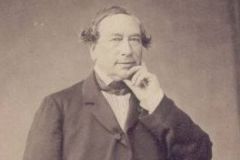So popular and practical that we might forget that it was ever invented, the paperback book has a very singular history. Let's discover how this small format was born...
The legend attributes the idea of the pocket book to the secretary of the Hachette bookstore, Henri Filipacchi, in 1953, who would have observed an American soldier cutting a book in two to slip it into the pockets of his fatigues. The paternity of the brand Livre de Poche is undoubtedly his, but for the rest we have to go back a long way and push the door of the Aldine printing house in Venice in the 15th century. Aldo Manuzio in order to make the great Greek and Latin classics accessible, its founder printed libri portatiles, works much smaller than medieval books. The ancestor of the pocket format was born.
The pocket format in a few chapters, from 1600 to 1905
At the beginning of the 1600s, small, inexpensive literature pamphlets appeared from the Trojan presses of the Oudot brothers. These books of small format and poor quality printing were quickly distributed by peddlers and known as the Bibiothèque bleue.
In 1851, Louis Hachette discovered the London station stands at the World's Fair. In 1853, he launched the Railway Library in order to offer travelers books that were particularly convenient to slip into a pocket or luggage. In 1856, the Michel Lévy publishing house brought out a small format collection for one franc.
Fayard launches in 1905 the Popular book the book is also small in size and reasonably priced.
February 1953, a page is turned with Le Livre de poche
In February 1953, the first Paperback published by the Librairie générale française belonging to Hachette: Koenigsmark of Pierre Benoit. Henri Filipacchi, then secretary of the Hachette bookstore, as well as Albin Michel, Calmann-Lévy, Grasset and Gallimard are the founders of this collection.
Henri Filipacchi was inspired by the American model to print and distribute the Paperback . The production of this format becomes industrial. The presses enter the dance, the binding is innovative, goodbye threads and seams, place to the glued square back. The cover, until now dull, was covered with a varnish and decorated with illustrations in order to stimulate the impulse to buy. The distribution of the Paperback breaks the codes, and the use of the Hachette network allows its massive distribution. This upheaval will benefit all French paperback publishers.
From now on, the little 11 x 18 centimeter book will be sold out of the bookstore! Displayed outside on a turnstile, it sells itself. Inside the bookstores, shelves are dedicated to it. It is installed in train stations and later in supermarkets and hypermarkets then in full development.













